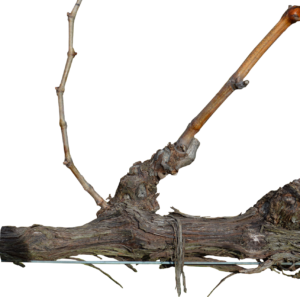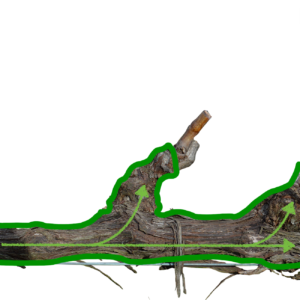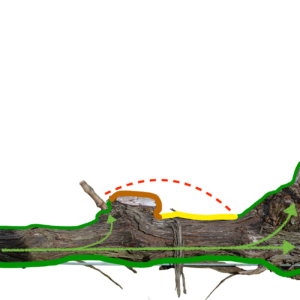SPURRED CORDON
GENERAL CONSIDERATIONS
This form of training, the Spurred Cordon, involves the formation of a permanent cordon. The permanent cordon is the extension of the trunk of the vine on which the vegetative points are identified and formed. The cordon can be vertical (no longer used) or horizontal (single or multiple). Vegetative points are the most important sections of the plant. When pruning it will be necessary to preserve these points with cuts that do not compromise the conductive tissue and consequently the cordon itself.
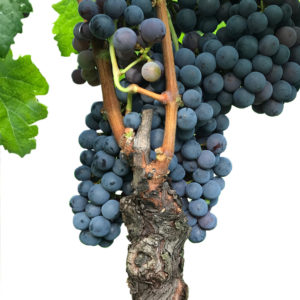
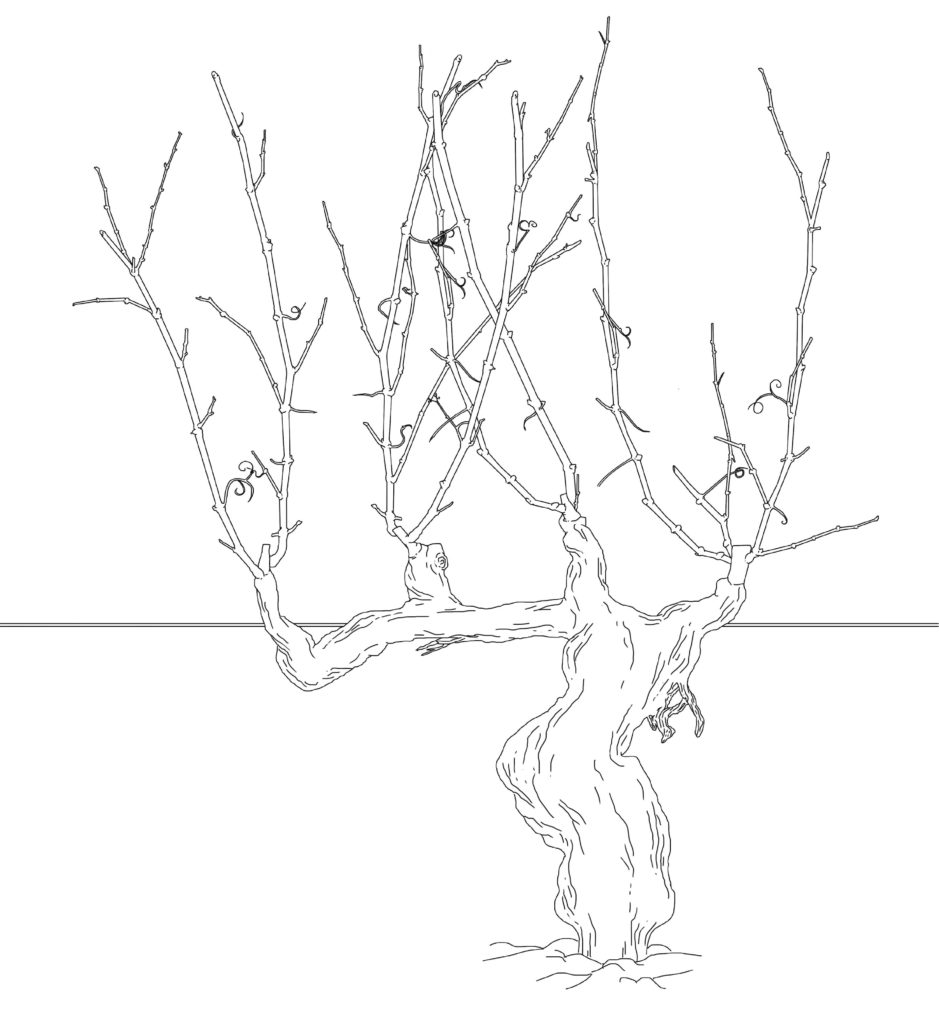
Cordon de Royat
TRAINING SYSTEMS
UNILATERAL CORDON
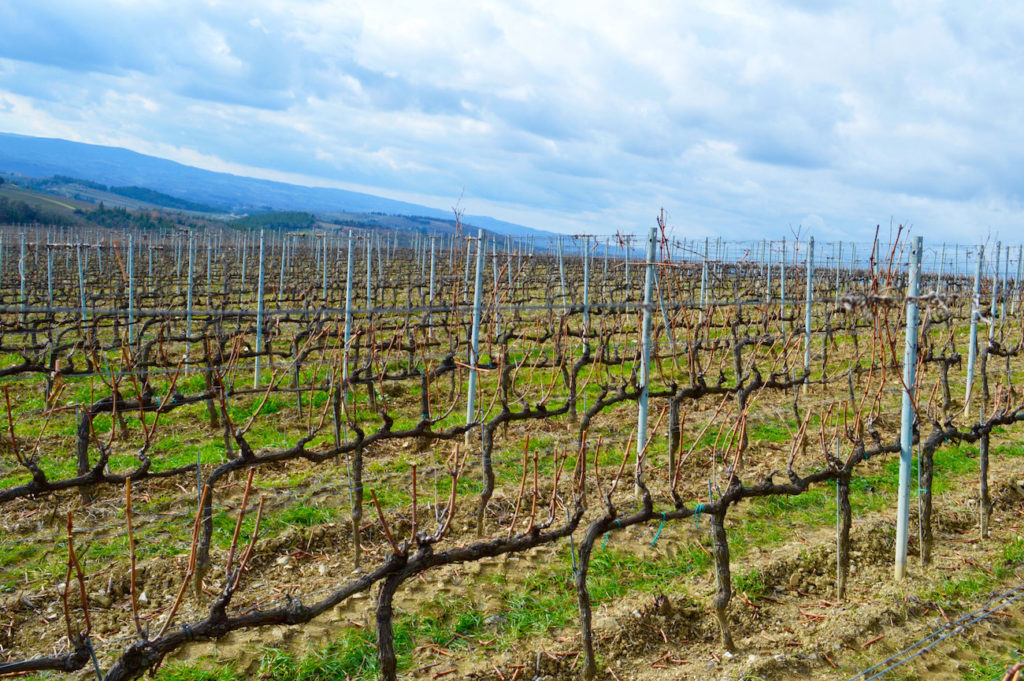
The unilateral cordon is formed bonding the extension of the trunk on the supporting wire. If the branch that will form the cordon will have long internodes, the vegetative points will develop from all the buds of the shoot. If the internodes are shorts, only the upward buds will be used. The first condition need more care during the breeding. On the unilateral cordon it is better to breed less than 7 vegetative points.
BIALTERAL CORDON (T-SHAPE)
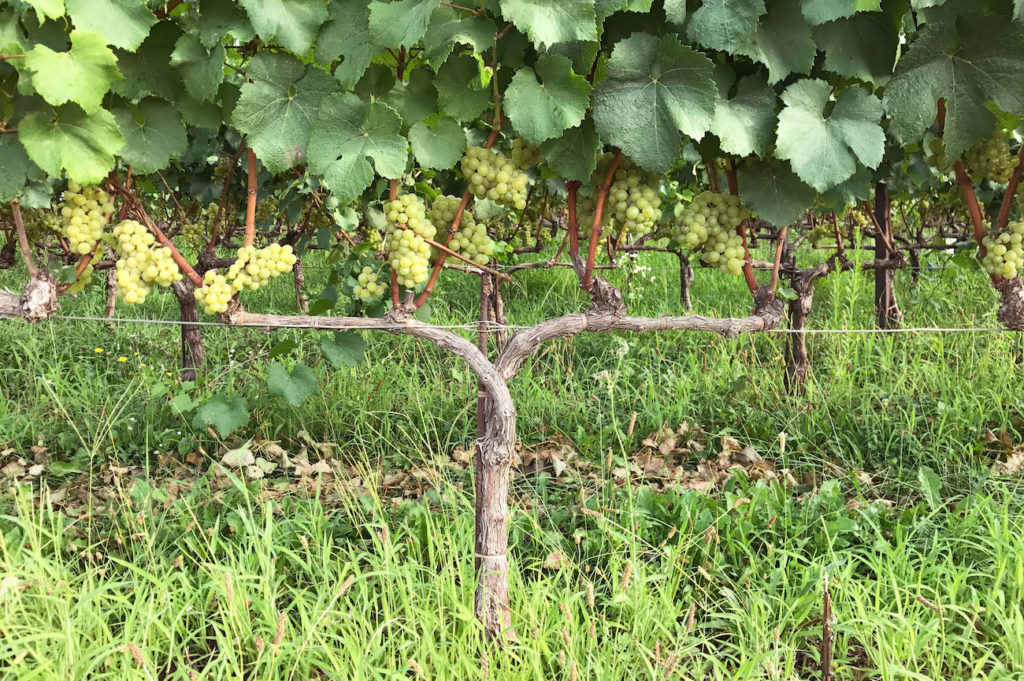
On the bilateral cordon, the vegetative points are distributed on 2 branches. With this form of breeding it is difficult to experience prevalence phenomena but it is reccomended to form the branches with 2 shoots of the same year. To facilitate the positioning of the vegetative points, the shoots will be bent in the opposite direction to their natural orientation.
With this method it is possible to maintain the correct distances between the vegetative points of the adjacent plants.
VERTICAL CORDON
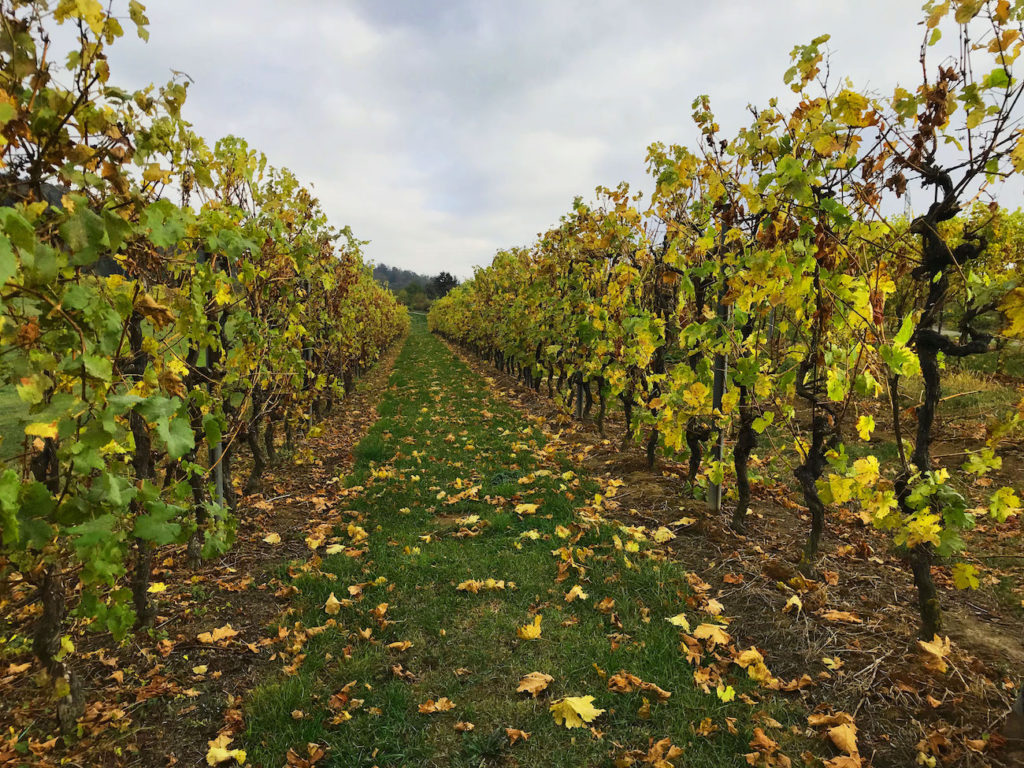
This form of training was introduced to mechanize almost completely the process. The trunk reaches two meters in height and the vegetative points are inserted along this length. The whole vegetation is falling and the production is distributed over the entire length of the cord. Distribution of the vegetative wall and bundling are the weak points of this training system.
CORDON TRAINING
When setting the spurred cordon, the vegetative points must be strategically positioned to obtain an almost constant distribution along the row. This means maximizing the photosynthetic efficiency of the vegetative wall and avoiding cramming of the bunches. The final form is reached in stages, according to the vigor of the plant. Depending on the length of the internodes and the space available to the cordon, the orientation of the buds of the branch will be decided. Long internodes correspond to horizontal gems, while short internodes correspond to vertical gems. When positioning the shoot that will form the cordon one must also consider the first and last vegetative points of the adjacent plants.
SHORT INTERNODES
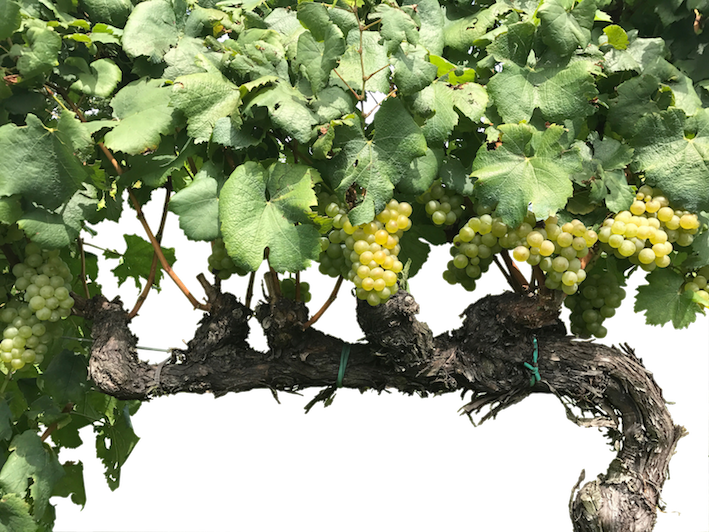
Consecutive vegetative points
LONG INTERNODES
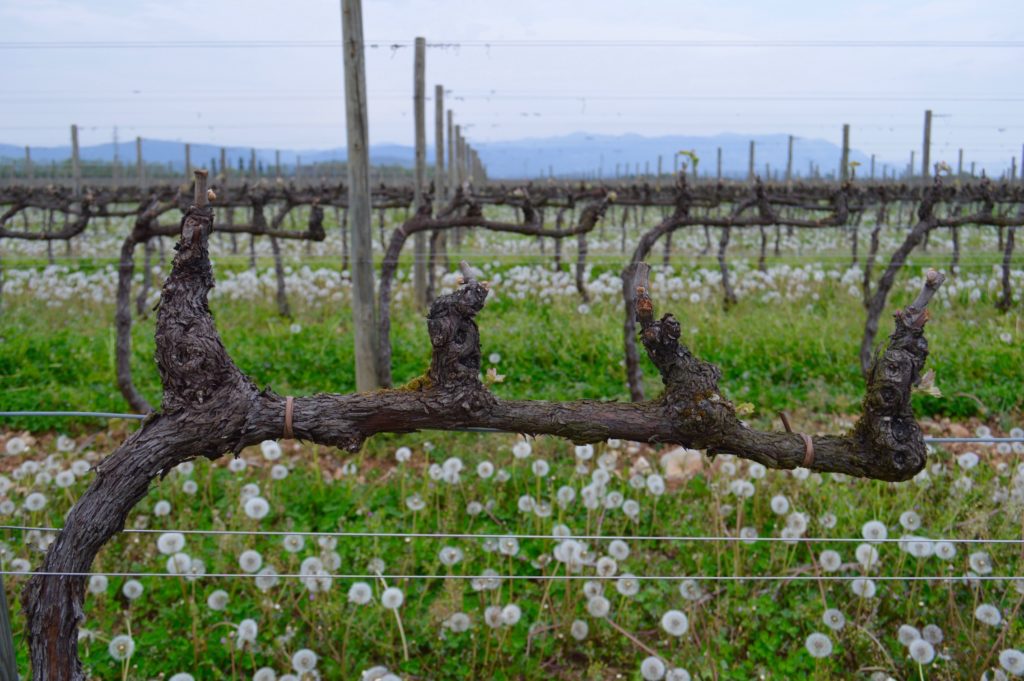
Alternate vegetative points
When pruning for production, reduce return cuts to a minimum and if the cordon is formed correctly these will not be necessary.
In maintenance pruning, as well as saving the growth cones, it is necessary to ensure that the vegetative points maintain a correct distance between them to prevent bundling.
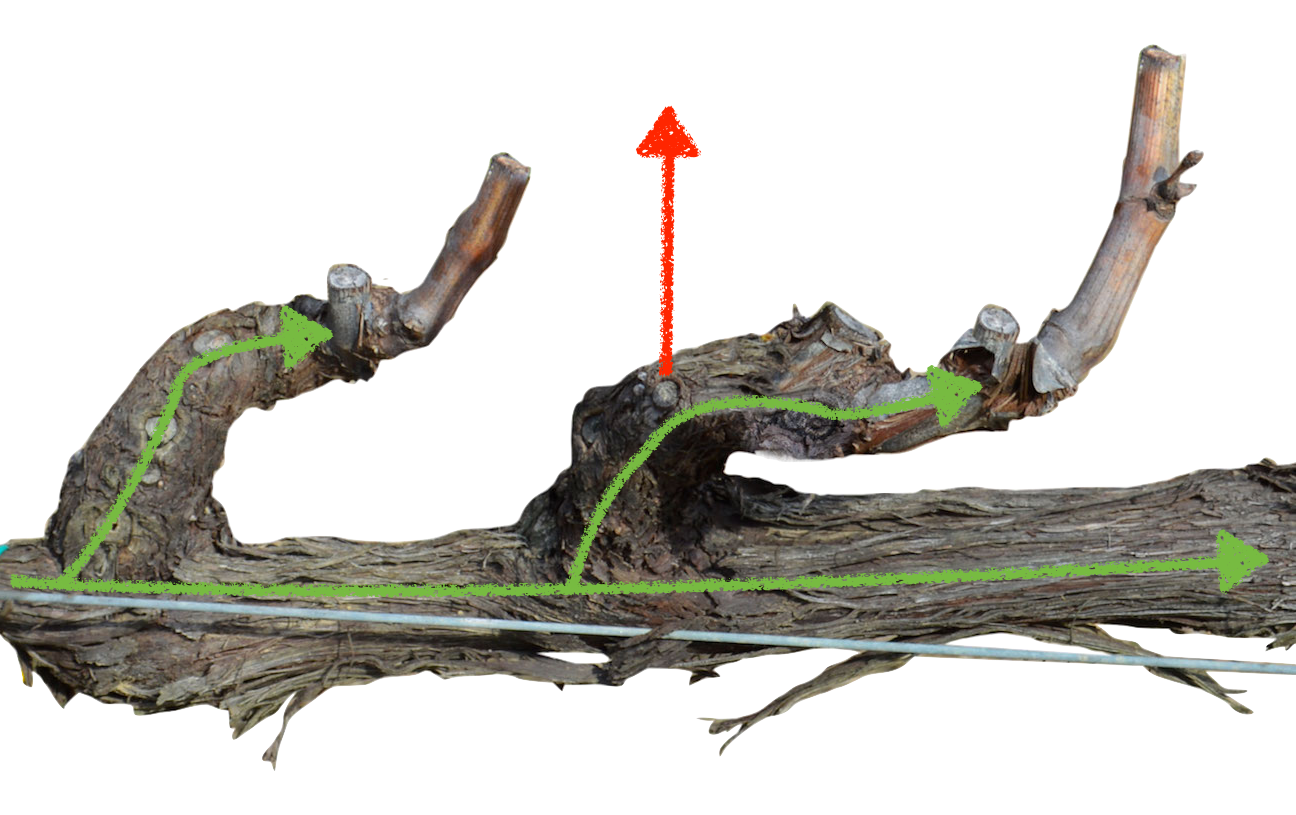
Keep the vegetative points as close to the cordon as possible, paying attention to both winter pruning and green pruning.
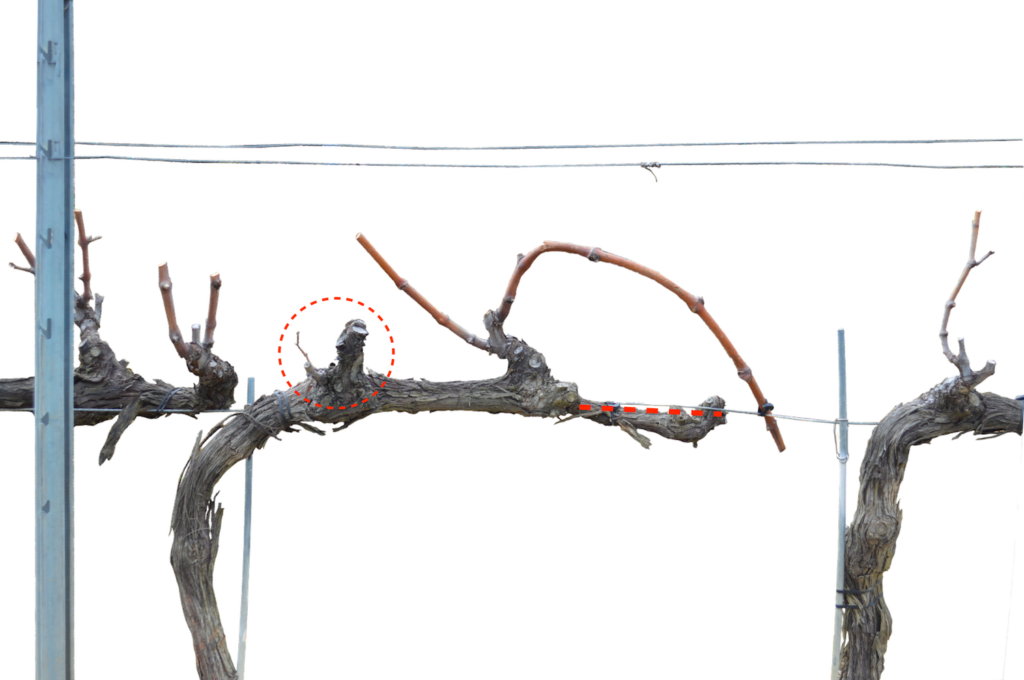
In the event of a collapse of the vegetative point, the health status of the whole cordon must be evaluated. If the cordon is healthy, the adjacent vegetative points can be branched (ramified), if the cordon is damaged on several vegetative points it is advisable to renew the cord from a sucker on the trunk.
MORE CORDON TRAINING
High cordon system
In the high cordon training system the cordon is placed at a height of 130 to 160 cm from the ground. The posts form the supporting structure and a single wire placed in the highest position of the post itself. The vegetation is totally hanging and is contained within the row trimming it.
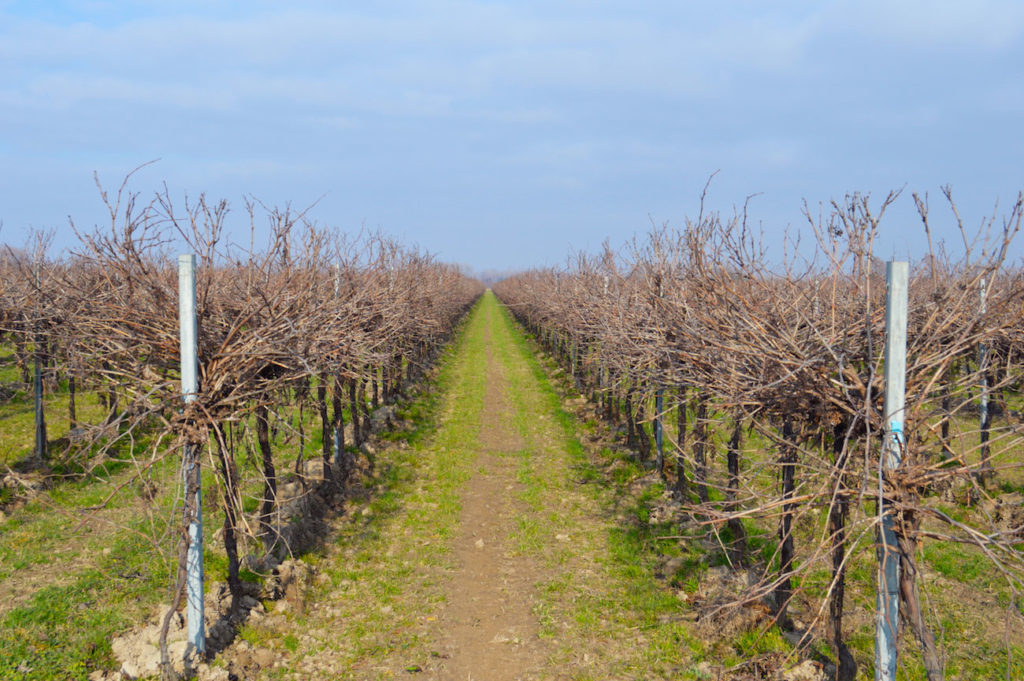
Syilvoz / Casarsa
Casarsa is a training system introduced and developed by Orfeo Salvador. As for structure and conduction it is similar to the high cordon system but differs in how of the vegetative wall is managed. Since there are one or more structural wires over the cordon, one section of the vegetative wall will be rising and the other falling. In consequence grapes will be distributed on a wider area (than in the high cordon system) and this results in greater photosynthetic efficiency as well as in better grapes health.
Sylvoz is very similar to the Casarsa method. It differs from it as the binding of the fruit-canes to the wire is placed under the cordon. With the Sylvos we have the possibility to distribute the vegetation on the row by tying the fruit-canes in the chosen position. Also with this method the vegetative wall is partly rising and partly falling.


